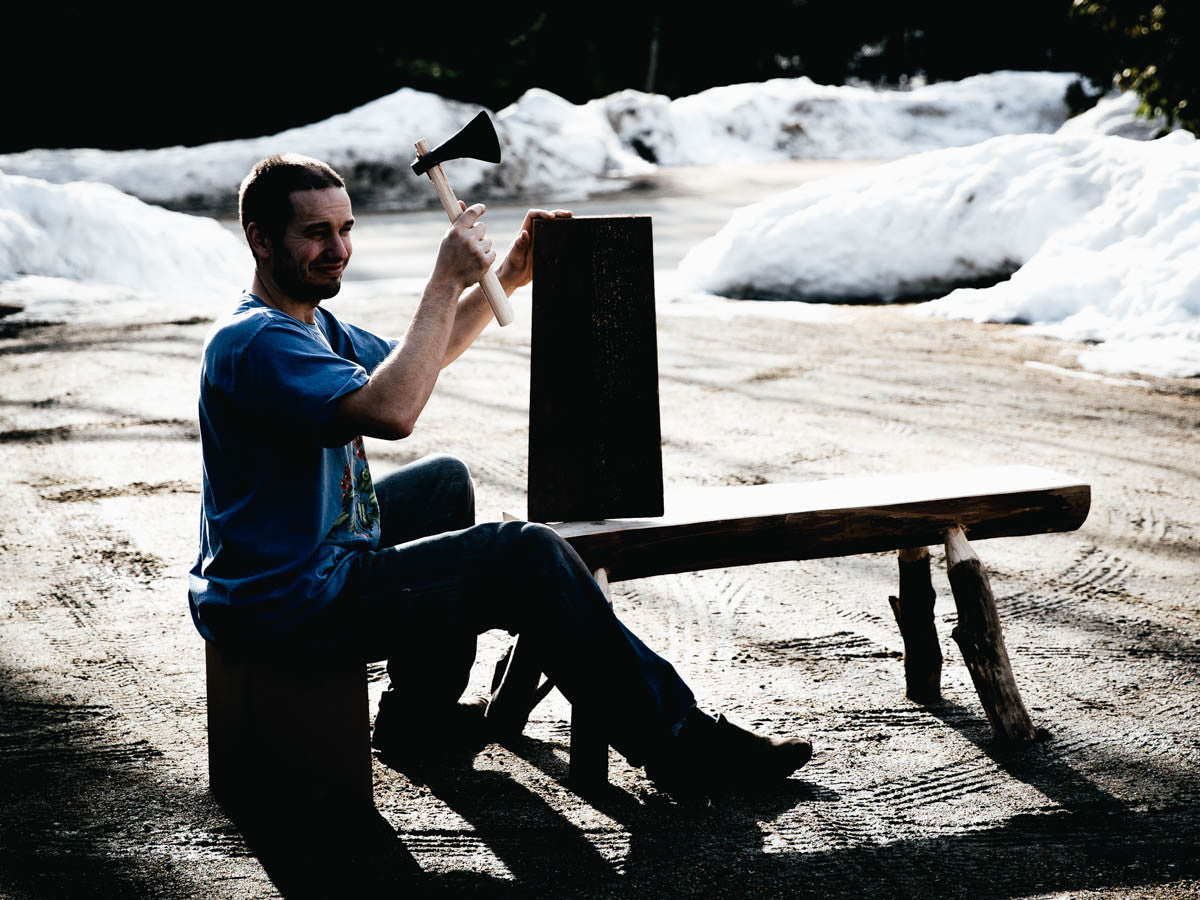
Note: In celebration of “PYE” Day today (3/14), we’ve decided to offer Free US Shipping on all our “Craftsmanship is Risk” merchandise (i.e. Shirts and Stickers). Today and today only.
I must admit that I am a latecomer to the “Real Craft” conversation. Many words have been written and many ideas exchanged over what exactly constitutes craftsmanship. Is it simply the act of making an object “by hand” (whatever that means…)? Is it running a CNC router from your laptop? Is it the practice of only recreating traditional forms with traditional tools? It seems folks have some strong opinions on every side of this debate.
The term “craft” has always carried me back to my childhood. Back then, my mom and grandmother would occasionally engage in bursts of productivity on their sewing machines, creating a wide variety of marketable items: baby quilts, dolls, and Christmas decorations. We would gather them up and bring them to what were called, in central Pennsylvania, “craft fairs”. As I got older, I helped a bit with our product diversity, making painted wooden animals or cute little pine snowmen with twig arms. We often did quite well, and my portion of the sales was generally spent on baseball cards. Because of these experiences, I’ve long associated the term “craft” with sweet little old ladies in extravagantly embroidered sweatshirts and copious amounts of Spanish moss hot glued to bric-a-brac. That, and the smell of cinnamon. Of course, this is a very incomplete (and likely inaccurate) picture that illustrates the importance of defining our terms properly.
David Pye has long been THE go-to resource for defining terms when it comes to craftsmanship. Since he first published The Nature and Art of Workmanship back in 1968, Pye’s nuanced argument has been the foundation for any deep discussion on the philosophy of workmanship. He writes as a maker himself, a true master of turning and carving. Even coming from this pragmatic standpoint, Pye considers terminology and definitions to be of vast importance in this conversation. He relates this story:
“Tzu-lu said, If the prince of Wei were waiting for you to come and administer his country for him, what would be your first measure? The Master [i.e. Confucius] said, It would certainly be to correct language.” After Tzu-lu argues vehemently that this is a secondary issue in running a nation, Confucius comes back bluntly: “Yu! How boorish you are!” He then describes the importance of accuracy in defining terms. “If language is incorrect, then what is said does not concord with what was meant; and if what is said does not concord with what was meant, what is to be done cannot be effected…”
In short, if you and I don’t understand what our words mean, all conversation is essentially pointless. The Nature and Art of Workmanship, then, is Pye’s dictionary for craftsmanship and, in the words of John Kelsey, it “remains the only useful framework we have.”
So how did Pye define “craftsmanship”? Readers of M&T are probably familiar with the term “Craftsmanship Is Risk” – the reference to Pye emblazoned on the back of our new t-shirt and stickers. Let me say first what it doesn’t mean. The “risk” involved isn’t to the maker – you know, sharp edges are dangerous and all. Hand-tool woodworking is not some thrill-seeking extreme sport, like BASE jumping or Skyrunning (though that’s an interesting angle to think about…). Hewing a log barefoot isn’t considered “workmanship of risk” because you could lose a toe, but because “the quality of the result is continually at risk during the process of making.” This is Pye’s definition of craftsmanship. It is inherently risky, because the end product can be destroyed at pretty much any time by the misuse of the unregulated tools of the craftsman.
This “workmanship of risk” is contrasted with the “workmanship of certainty”. Pye cites examples of mass production and full automation as the purest state of this form of making. “The result is exactly predetermined before a single salable thing is made.” The more predictable the outcome of a woodworking operation (i.e. working wood vs. machining wood), the farther we get from “craft”. “All the works of men which have been most admired since the beginning of history have been made by the workmanship of risk, the last three or four generations only excepted.” Here is where craftsmanship implies tradition, as Joshua has postulated before in this post and in his follow-up clarification. Our forebears produced everything with simple tools and the skill of their hands.
In summary, I offer this advice: read Pye for yourself (he is worth the effort). Keep your edge tools sharp, take care in your work, and enjoy the relationship between yourself, your tools, and your materials.
And keep telling folks about the inherent risk of craftsmanship – they might drop by for a visit to your shop to see what you’re talking about.
~Mike Updegraff

